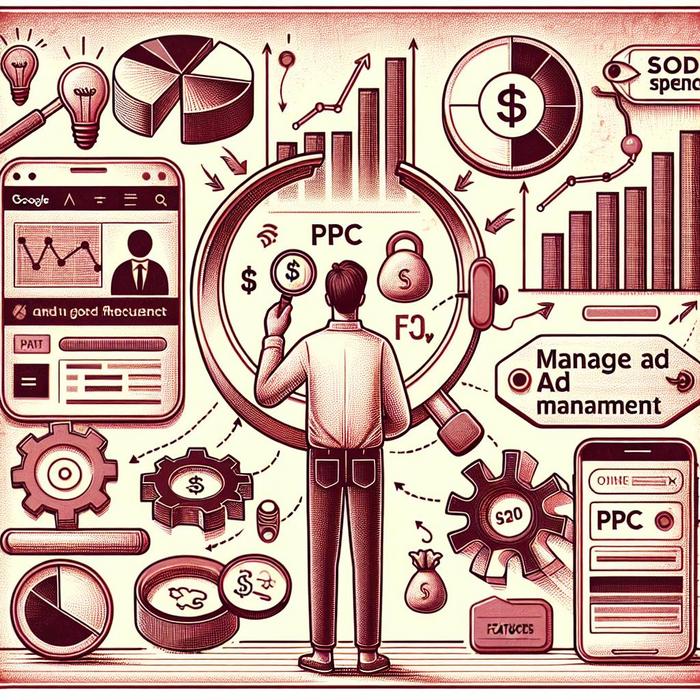Unleashing the Power of Data-Driven Decision Making
In today’s fast-paced business world, strategic decision-makers such as CMOs, CFRs, COOs, and CEOs are increasingly adopting innovative strategies to drive growth and profitability. One of the prime tactics involves ensuring maximum return on investment (ROI) from online advertising campaigns. This post demystifies how high-level executives can leverage their ad spend to achieve maximum lifetime value (LTV) from customers on leading platforms like Google.
Precision in Advertising with Lifetime Value Maximization
Gone are the days when ad campaigns were shot in the dark, with little understanding of their effectiveness. Today’s savvy marketers harness the potential of advanced advertising analytics to make precise decisions. The concept of lifetime value maximization is the driving force behind this shift.
This approach involves identifying your most profitable customers and allocating more marketing dollars to reach such high-value audiences. This strategy ensures that you allocate your ad spend optimally, thereby driving business growth. Research conducted by Shirofune Research Group suggests that companies implementing this strategy experienced a significant boost in their ROI.
Managing advertising strategies on major platforms like Google involves understanding the dynamics of LTV maximization. The company has several tools and resources to help businesses achieve this goal. For example, Google’s predictive analytics can be instrumental in making informed decisions.
Accelerating Returns with Efficient Ad Spend Management
Efficient ad spend management is crucial for profitable campaigns. Executives need to ensure that every penny invested in advertising provides substantial returns over a customer’s lifetime. This long-term perspective of customer profitability is the essence of ad spend management and helps businesses optimize their marketing budgets effectively.
Insights from Google’s predictive analytics can be valuable in this context, providing a data-backed foundation to make strategic decisions. These tools help decipher complex customer patterns and forecast potential revenue streams from different customer segments.
Responsiveness with Real-time Campaign Adjustments
Campaign effectiveness is not a ‘set-it-and-forget-it’ game. It requires continual monitoring and adjustments based on real-time performance data. This agility helps businesses stay ahead of the curve, outsmart competition, and maximize the ROI from their advertising investments.
For instance, if the data shows certain keywords or ad formats performing exceptionally well, businesses should consider increasing their ad spend on these promising areas. On the other hand, underperforming elements may need a strategic revisit or even discarding to avoid wastage of precious marketing dollars. Google Ads offers comprehensive insights on such performance metrics, facilitating timely interventions.
Forging Ahead: The Future of Advertising Optimization
In a recent job posting by Tumblerware, the company sought a digital marketing veteran with expertise in eCommerce and ad spend optimization, highlighting the growing importance of this discipline.
With the advent of AI and machine learning technologies, ad spend optimization will become even more sophisticated in the coming years. Intent marketing, predictive analytics, and real-time bid adjustments are some of the cutting-edge strategies gaining momentum. Businesses need to stay abreast of these developments and continuously innovate their advertising strategies to claim a competitive edge.
To delve deeper into the intricacies of advertising optimization on social media platforms, consider exploring how to transform PPC campaigns using TikTok’s creative tools.
As we move ahead, it becomes increasingly critical for businesses to keep pace with these innovations. As high-level executives, the onus is on you to spearhead this change, championing the drive towards more efficient and profitable advertising practices.
Mastering the Art of Intent Marketing
A standard to aspire towards in the new age of marketing is intent marketing. Customer purchases are frequently preceded by digital hints—keywords, browsing history, shares, likes, and so forth. Recognizing and acting upon such customer signals can yield substantial returns. A popular aspect of intent marketing is the use of predictive analytics, smart algorithms that help decode these Intent signals, allowing businesses to serve highly personalized marketing content that resonates with the customer’s needs and aspirations.
For example, with Google Ads, businesses can leverage the power of intent marketing. By understanding customer searches, preferences, and behaviors, the platform opens a gateway to reach potential customers at the right time in their decision-making processes.
Optimizing Ad Bidding Practices
A key aspect of achieving maximum return from online advertising is bidding optimization. While bidding might appear to be a game of hit and trial, businesses can indeed turn the tide in their favor using efficient approaches. Real-time bid adjustments is an innovative strategy where businesses adjust their ad bids based on temporal factors — day of the week, time of the day, or specific seasons. Properly implemented, it can significantly improve ad performance.
For businesses seeking proficiency in this regard, Google’s bid tools provide a valuable resource. It offers features like automated bidding, helping businesses to maximize conversions and ROI.
Identifying and Targeting High-Value Customers
Focusing marketing efforts on high-value customers—those who bring the most revenue over time—is a proven strategy to achieve robust growth and profitability. Fortunately, there are smart online tools available to facilitate the challenging process of identifying such customers.
One such example is the use of LTV in Google Ads. Through this feature, marketers can gain insights into which customer interactions lead to higher LTV, helping them further streamline their advertising strategies and focus more resources on attracting and retaining high-value customers.
Payload for Customer-Centric Approach
Businesses going the extra mile to understand and cater to their customers’ needs often reap significant benefits. Such a customer-centric approach can significantly improve customer loyalty, boost lifetime value, and finally, increase profitability.
For businesses seeking to enhance customer satisfaction rates on leading platforms, they may find useful insights in achieving high ad satisfaction rates on Meta platforms. Meta offers ample opportunities to build and nurture customer relationships, key to creating a loyal customer base with a high lifetime value.
Leveraging Social Media Advertising
Social media platforms such as TikTok provide a fertile ground to reach younger audiences. They offer valuable features like Detailed Demographics to help businesses tailor their ad campaigns, targeting the most promising customer segments.
Moreover, mastering TikTok’s advertising platform can open up a wealth of opportunities. By exploring how to optimize ad performance on TikTok, businesses can ensure their campaigns gain maximal traction and provide a significant ROI.
As high-level executives, your role includes overseeing the alignment of these advanced marketing tactics with your business objectives. By navigating this dynamically changing landscape, you can steer your enterprise towards unprecedented success. Prepare for an era where data-driven decision-making takes center stage, and profitability is driven by precisely targeted ad campaigns.









